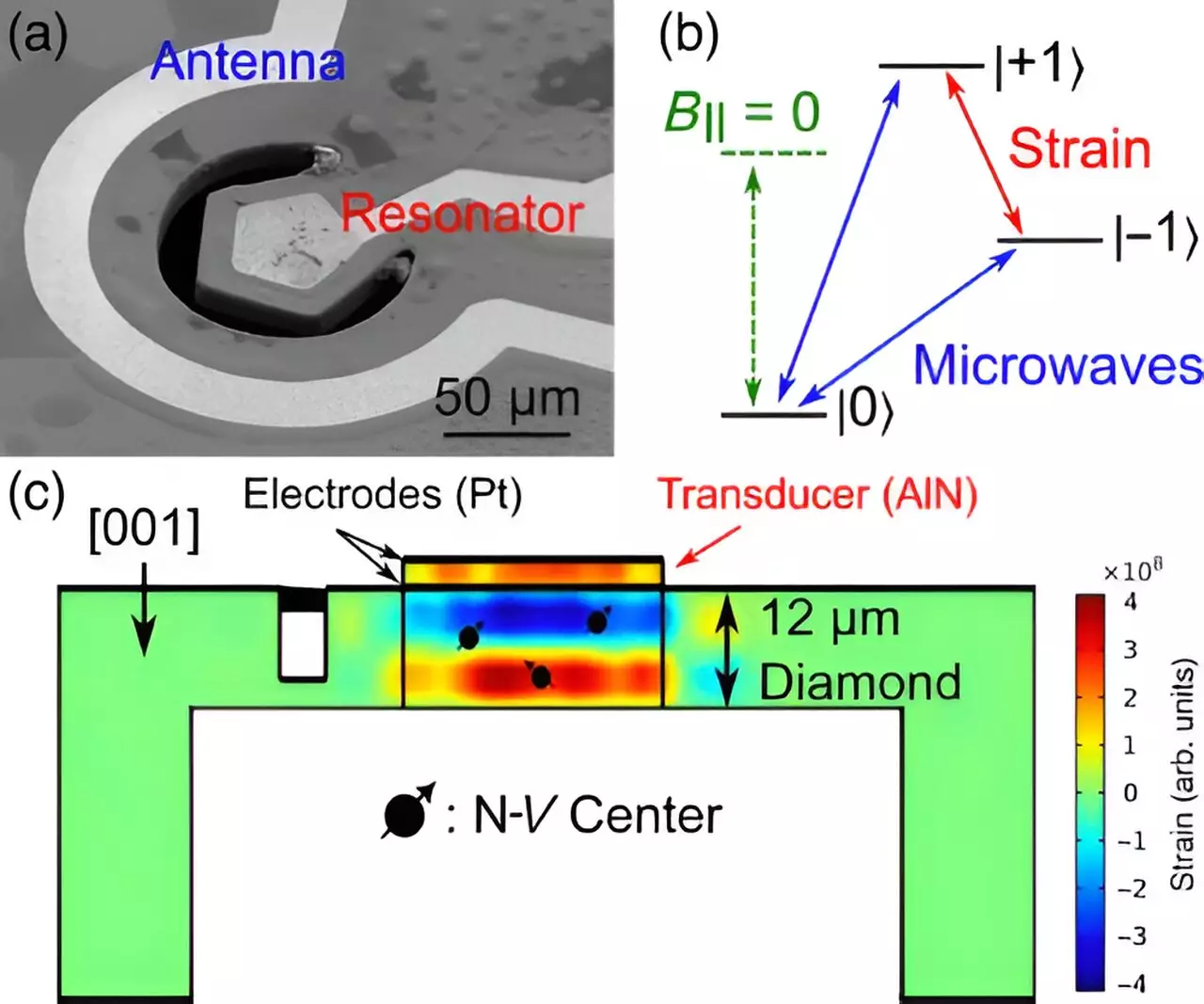Quantum technology, a field on the precipice of a revolution, hinges upon the intricate dance of atomic and subatomic phenomena. At the forefront of this burgeoning arena is diamond, an exceptional material that Cornell University professor Gregory Fuchs heralds as the prime candidate for advancing quantum sensing capabilities. Fuchs and a coalition of researchers have achieved remarkable strides in elucidating the vibrational behavior of diamond structures while unveiling connections between atomic strain and spin properties, ushering in a new chapter for quantum information science.
Advancements in Quantum Imagination
The collaborative effort, which includes expertise from the U.S. Department of Energy’s Argonne National Laboratory and Purdue University, has led to groundbreaking insights in two pivotal areas. Initially, researchers invigorated diamonds through sound waves, positioning them uniquely to capture X-ray images detailing atomic vibrations and their fluctuations due to wave frequency. This innovative methodology not only provides visual representation but meticulously quantifies the degree of atomic compression and expansion, laying foundational work for future quantum sensor applications.
Moreover, the team linked the behavior of these microscopic vibrations — referred to as strain — directly with another critical atomic characteristic: spin. Spin, often seen as the bedrock for encoding quantum information, is profoundly sensitive to environmental factors, including strain. This connection is significant because it equips scientists with a robust framework for manipulating atomic spins via controlled vibrations, providing a hands-on instructional manual for tentative users of this technology.
In a remarkable achievement published in Physical Review Applied, the team has accurately measured the spin-strain correlation at extraordinarily high gigahertz frequencies — a domain that previously remained unexplored in diamond research. Notably, it represents a significant leap within quantum science, where precise atomic behavior is central to pitting quantum sensors against their classical counterparts. By establishing a mathematical relationship between spin and strain, the researchers are effectively paving the way for a new era of high-precision quantum measurements.
As Fuchs notes, “We’re integrating two sides of an equation — the spin dynamics and atomic strain — and mapping their interactions with unprecedented detail.” This endeavor was geographically extensive, as measurements for spin were conducted at Cornell, while strain analyses occurred 700 miles away at Argonne, bolstered by the advanced X-ray technologies available there.
The Advanced Photon Source (APS) at Argonne plays a crucial role in this transformation, generating high-resolution X-rays that allow scientists to observe how materials behave at atomic and molecular levels. The team’s effort employed this facility to create strobe-like images of atomic movements in diamonds, focusing particularly on nitrogen vacancy (NV) centers, structures essential for quantum sensing technologies. The precision of APS’s imaging capabilities enabled the researchers to measure atomic movements with outstanding accuracy, providing invaluable insights into the behavior of quantum systems.
The quest involved collaboration aimed at pushing the envelope of our knowledge — a pursuit that balances mesoscopic interactions within complex materials to ascertain how these atomic behaviors correlate to quantum properties. As Argonne scientist Martin Holt mentions, “The importance of using X-rays lies in their ability to penetrate complex systems, delivering quantitative insights that are pivotal in understanding quantum mechanics.”
What sets this research apart is the innovative application of acoustic waves to manipulate atomic spins — a less conventional but highly advantageous approach compared to traditional electromagnetic methods. Acoustic manipulation has a host of benefits, including the protection of delicate quantum information from decoherence, a common pitfall in quantum systems. According to Holt, using acoustics can be likened to utilizing white noise to shield a conversation from surrounding distractions, a metaphor that underscores how sound can stabilize systems.
Additionally, the compact nature of gigahertz acoustic waves allows for smaller configurations of quantum devices, minimizing signal interference and enabling dense, efficient setups. “Acoustic-wave devices can be extremely confined,” Fuchs asserts, making them highly suitable for advanced quantum sensing applications, particularly in systems where precision is paramount.
The Future of Quantum Sensing with Diamond
Combining the advantages of diamond with the unique properties of acoustic waves presents an unparalleled opportunity to elevate quantum sensing technologies. With diamond providing longevity for quantum information and reliable operation even at room temperatures, it stands as a prime material in the quantum landscape. Fuchs emphasizes, “Diamond is widely considered the pinnacle material for quantum sensors, ensuring longevity and exceptional performance.”
As researchers continue to explore quantum phenomena through collaborative multidisciplinary efforts, the recent revelations articulated in this study signify not only progress but also the potential for transformative applications across various fields, including medicine, navigation, and cosmology. The exploration of quantum mechanics, with diamond at its core, remains a promising trajectory in the quest for precision and excellence in modern science.

